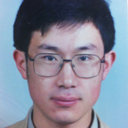Novel RUNX2 mutations in Chinese individuals with cleidocranial dysplasia.
Keywords
Abstract
Cleidocranial dysplasia (CCD) is an inherited autosomal-dominant skeletal disease caused by heterozygous mutations in the osteoblast-specific transcription factor, RUNX2. We performed mutation analysis of RUNX2 on four unrelated Chinese individuals with CCD. Three novel distinct mutations were detected in the coding region of RUNX2: two missense and one frameshift. These mutations were exclusively clustered within the Runt domain. One missense mutation converts threonine to isoleucine at codon 200 (T200I). The other one substitutes leucine for arginine at codon 225 (R225L), which affects many family members. The frame-shift mutation (214fs) in exon3 leads to the introduction of a translational stop codon at codon 221, resulting in a truncated RUNX2 protein. The reporter gene assays revealed that all the mutants exhibited significantly reduced transactivation activities on the osteocalcin promoter. Our results provide new genetic evidence that mutations involved in RUNX2 contribute to CCD.
BACKGROUND
AML3, gene encoding acute myeloid leukemia protein 3; bp, base pair; CBFA1, gene encoding core-binding factor 1; CBFbeta, gene encoding core-binding factor beta; CCD, cleidocranial dysplasia; NLS, nuclear localization signal; OSE2, osteoblast-specific cis-acting element 2; PEBP2A, gene encoding polyoma enhancer binding protein 2A; PST, proline/serine/ threonine-rich domain; Q/A, glutamine-alanine repeat domain; Runt, Runt Homology Domain; RUNX2, the mammalian runt-related genes 2; RUNX2, Runt-related protein 2.


